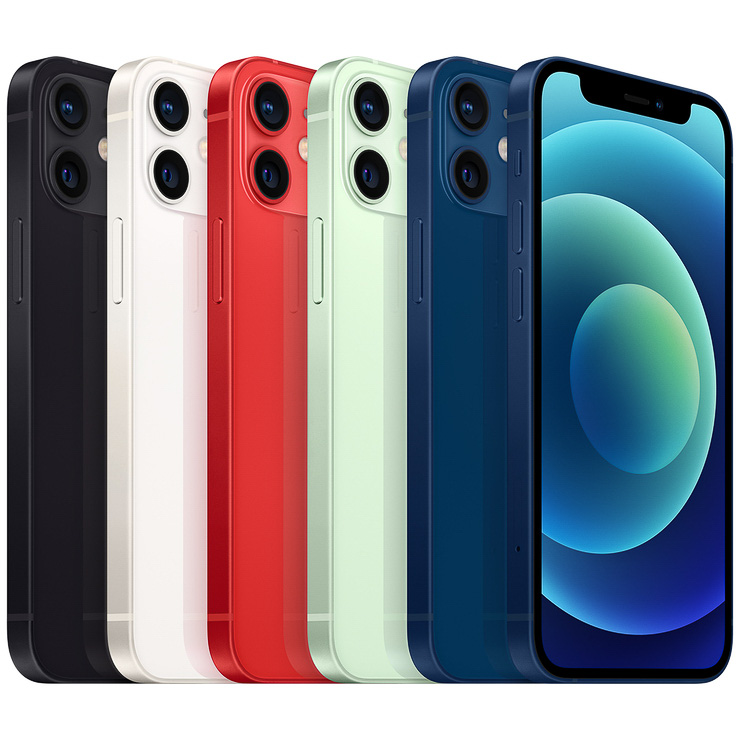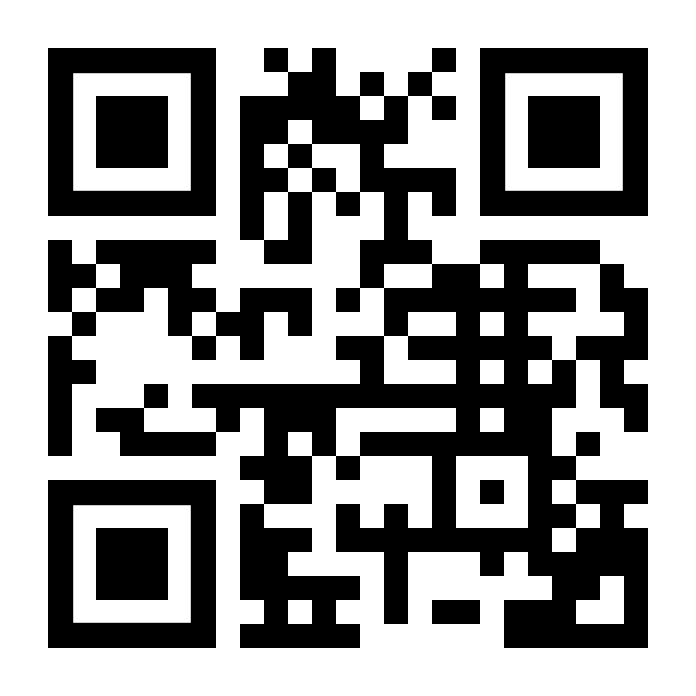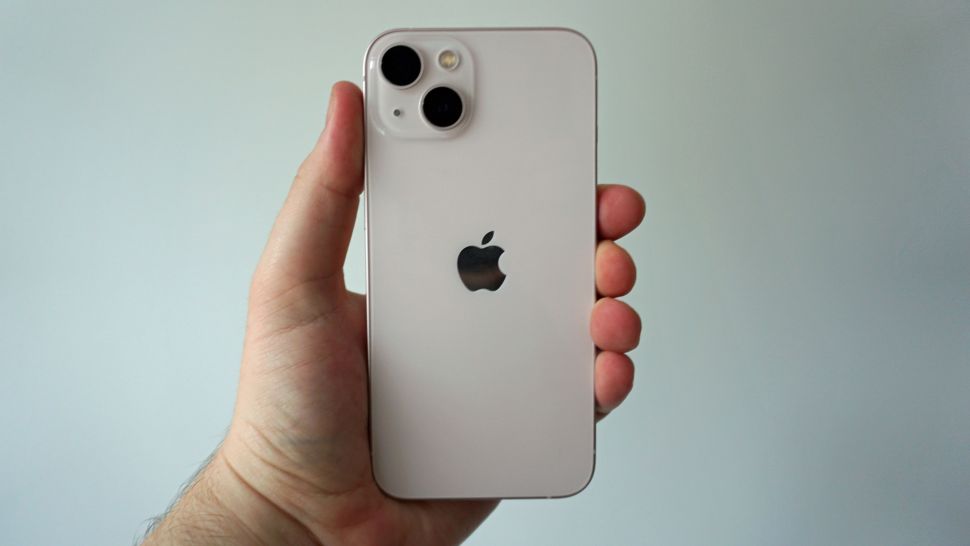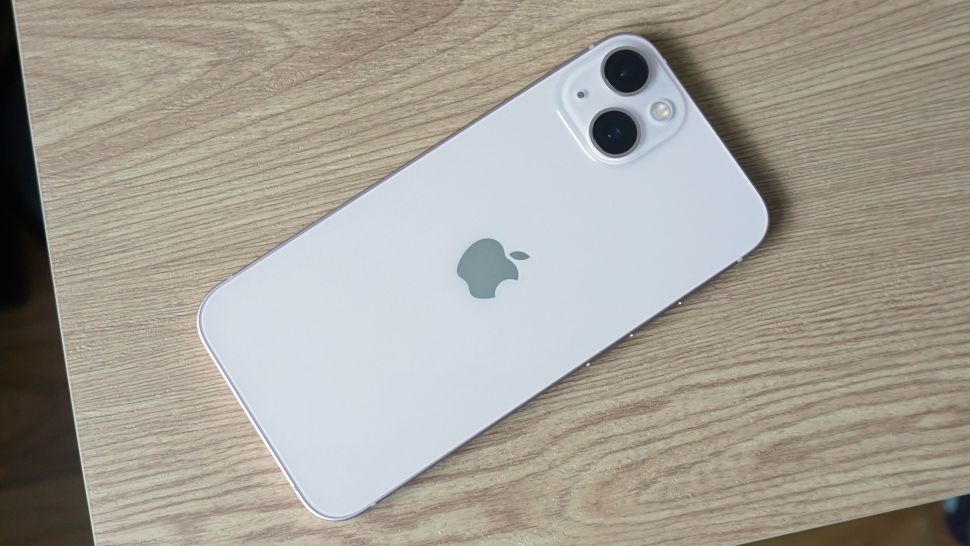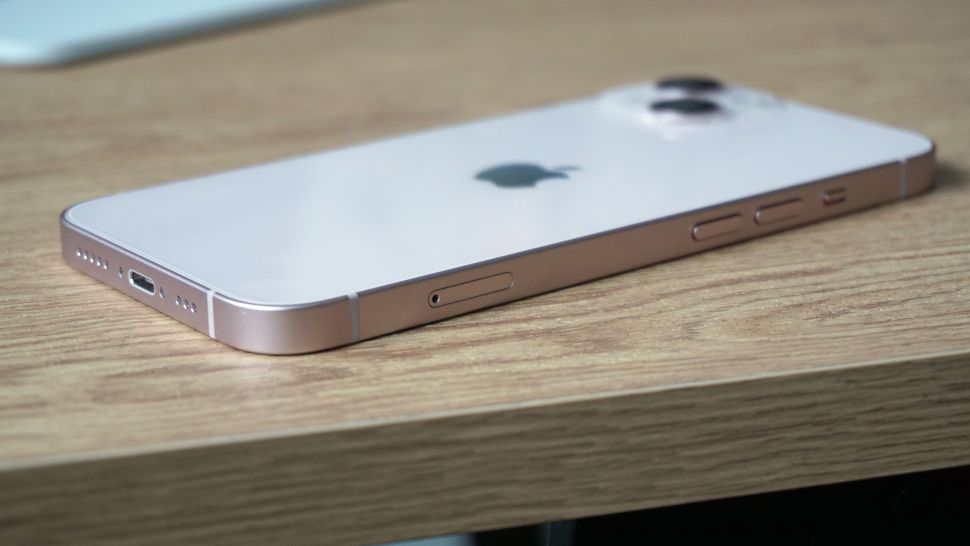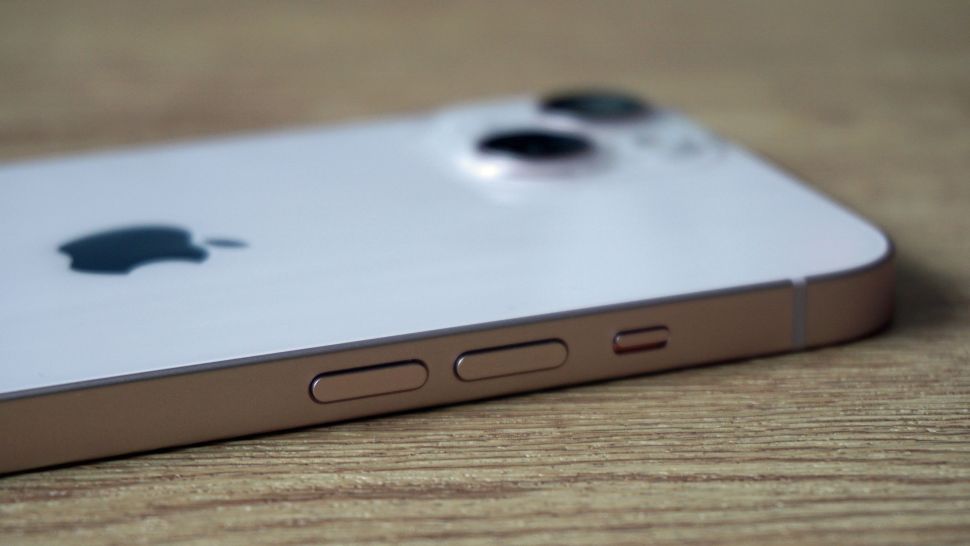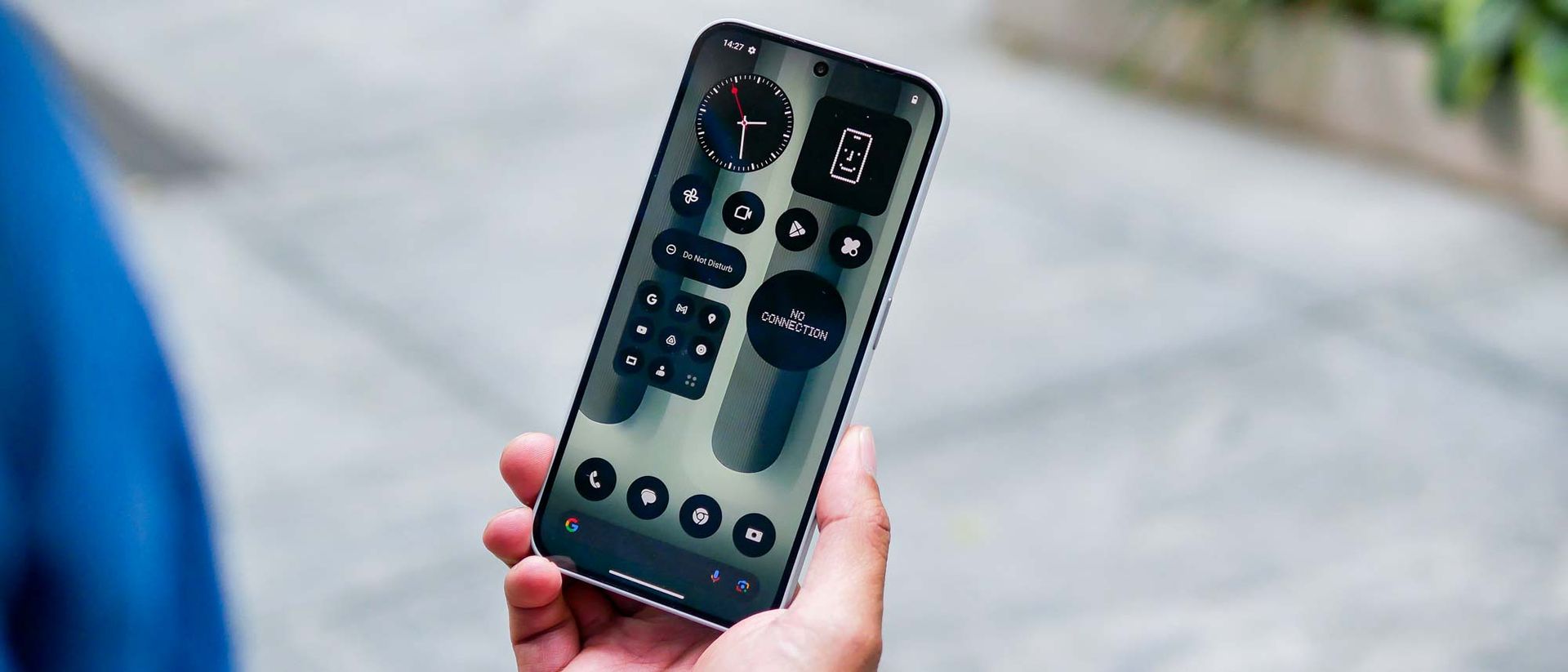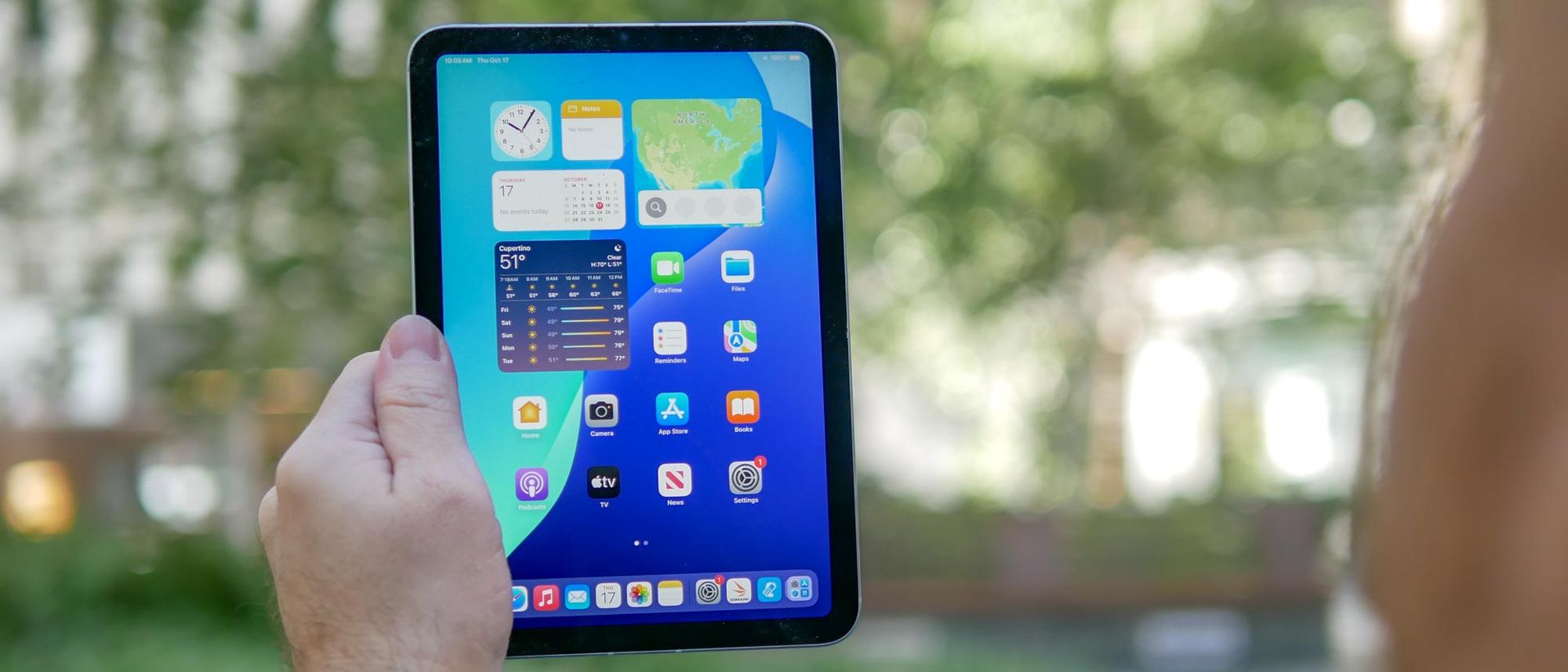Trade in iPhone 13
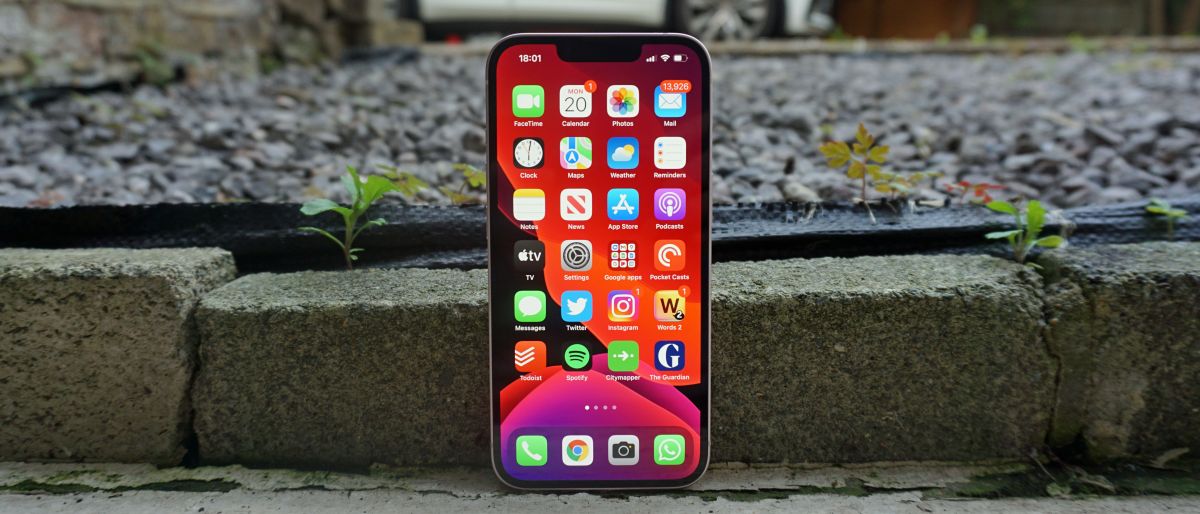
(Image credit: TechRadar)
Two-minute review
The iPhone 13 doesn’t bring with it a huge number of new features, but it does improve on the iPhone 12 in several areas – chiefly battery life, power, display and cameras – to make this one of the most impressive all-round handsets we’ve seen from Apple.
On paper, you’d be hard pressed to find a reason why Apple didn’t call this phone the iPhone 12S. The design is largely the same, the specs don’t look hugely different, and there aren’t many headline-grabbing new features.
However, everything on the iPhone 13 is a touch better than before – and some elements are significantly better.
The highlight of the iPhone 13 is its battery life. Previously, iPhones haven’t been synonymous with strong battery life, but during every day or our testing so far we’ve been hard-pressed to run the iPhone 13 out of juice.
Apple may have finally cracked it when it comes to battery life, but be sure to head back soon for our final verdict to see if we still feel the same way at the end of our testing period.
The iPhone 13’s new A15 Bionic chipset, meanwhile, is incredibly powerful, and paired with 4GB of RAM it’s capable of running multiple apps and tasks quickly and efficiently.
A new duo camera for the iPhone 13 improves clarity in images, while the introduction of the company’s Sensor Shift optical image stabilization (OIS) technology, previously only available on Apple’s Pro Max handsets, is a big deal for those who want to shoot quickly without losing their subject in a blur.
Even the screen on the iPhone 13 is a touch better than what we’ve seen on previous ‘standard’ iPhones, and that’s a big deal if you’re upgrading from an iPhone XS or older. The OLED technology here enables a brighter picture than ever, and the picture quality is simply fantastic.
One disappointment, however, is that Apple hasn’t included a 120Hz refresh rate on the iPhone 13, so you’re not getting as smooth an experience as on the iPhone 13 Pro or iPhone 13 Pro Max.
As ever, Apple’s new iPhone will cost you, with the iPhone 13 price starting at $799 / £779 / AU$1,349 – although this year that gets you 128GB of storage, rather than the 64GB of the base-model iPhone 12.
While at first glance the iPhone 13 may not seem like a great leap forward for Apple, the improved battery life, performance, screen and camera all add up to be a worthwhile upgrade for anyone who’s coming from an older iPhone, or looking to make the switch from Android.
- Read our hands on iPhone 13 mini review
- Read our hands on iPhone 13 Pro review
- Read our hands on iPhone 13 Pro Max review
We are Tradelectronics, licensed second-hand electronics dealer located in Sydney CBD, experts in trading used laptops, old cameras & lens, and used mobile phones. Fast, Reliable & We Pay More! Get a free quote on your favourite WhatsApp, Facebook, SMS & Email, instant reply!
| Click icon for WhatsApp Quote | Click icon for facebook Quote |
 |
 |
- We are open from Mon – Sat 12pm – 7pm
- Get your free quote from WhatsApp and Messenger are highly recommended, we can guide you through in finding the accurate specs for your laptops, cameras & lens, mobile phones as well. As such we can provide a more precise quote for you.
iPhone 13 release date and price
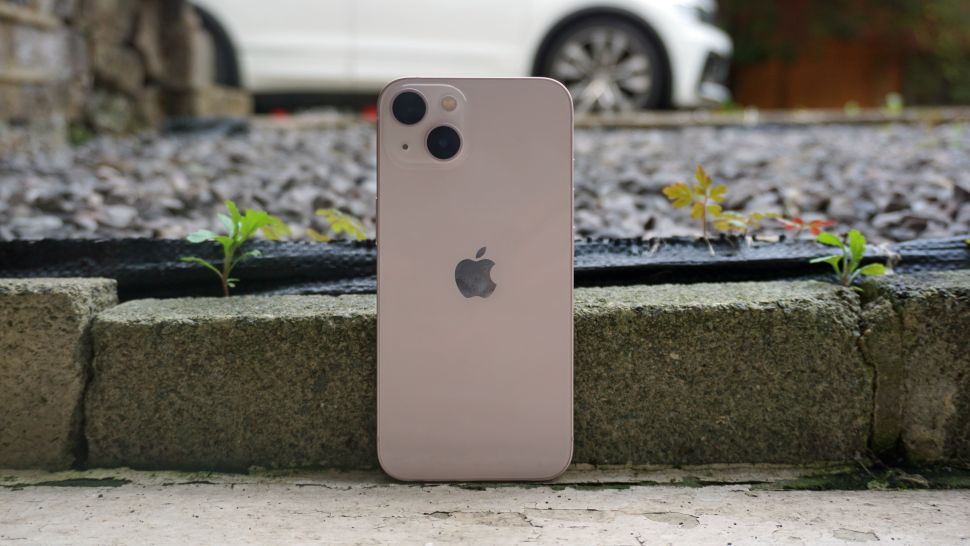
(Image credit: TechRadar)
The iPhone 13 series was announced on September 14 at the company’s launch event, with pre-orders opening on September 17. The iPhone 13 release date is September 24, and unlike with 2020’s iPhone 12 series you’ll be able to buy the new handsets on the same day.
The iPhone 13 starts at $799 / £779 / AU$1,349, which is the same price as the iPhone 12 in the US and Australia, and a touch cheaper in the UK. The iPhone 12 cost $799 / £799 / AU$1,349 at launch.
You’ll get 128GB of storage for that price – Apple has dropped its 64GB models this year, and not before time. If you need more storage, the 256GB iPhone 13 costs $899 / £879 / AU$1,519, while the 512GB model costs $1,099 / £1,079 / AU$1,869.
If those prices are a bit of a stretch, the iPhone 13 mini has similar specs but is a not-insignificant amount cheaper, starting at $699 / £679 / AU$1,199, while going in the other direction you’ve got the iPhone 13 Pro and iPhone 13 Pro Max if you’re looking for higher specs and, in the case of the latter phone, a larger screen.
Design
If you own an iPhone 12, you’re unlikely to see a big difference between that handset and the iPhone 13. If, however, you own an older iPhone, or an Android device, you’re certainly going to see some differences.
The new iPhone features a flat-edge design, which debuted with the iPhone 12 range. That means the design is a touch more angular than the rounded finish of previous iterations, but the phone is still comfortable to use one-handed.
The front and rear of the handset are glass, but only the front panel has Apple’s patented Ceramic Shield technology, introduced on last year’s iPhone 12 . Apple says this offers four times the drop resistance of the glass on older iPhones, but we still wouldn’t recommend putting this claim to the test.
(Image credit: TechRadar)
We’ve yet to drop this handset, but it’s comforting to know that the Ceramic Shield tech is there as a safety net – although we’d be more comforted if it was on the rear of the phone too.
On the subject of durability, the iPhone 13 series is IP68 dust and water resistant, which means it can survive in up to six meters of water for a period of 30 minutes. Don’t expect this handset to be fully waterproof, but it’ll survive the odd dunk.
On the left edge of the phone are the silence switch, the volume buttons and the SIM tray. The right edge hosts just the power button, so it’s easy to find with your thumb or finger when you’re trying to wake the handset.
On the bottom edge are the speakers, and the Lightning port connector for charging and data transfer.
We found the iPhone 13 was easy to use one-handed – it measures 146.7 x 71.5 x 7.7mm – although if you want a truly one-handed device, or you have smaller hands, the iPhone 13 mini may be a better choice.
The iPhone 13 weighs a touch more than the iPhone 12, at 174g compared to 164g, but it’s not something you’ll notice in everyday use, and it’s roughly the norm for a phone of this type.
The rear of the iPhone 13 is plain, but looks sophisticated, with the Apple logo taking center stage and the camera module at the top-left. A minor change this year is that the company has opted to arrange the main lenses in the camera array diagonally, rather than vertically as on previous iPhones.
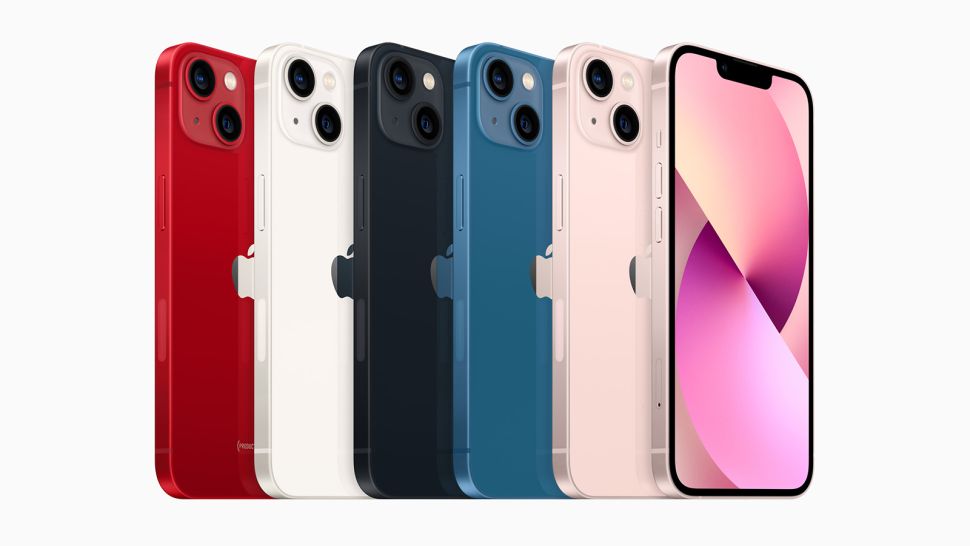
Every color choice for the iPhone 13 (Image credit: Apple)
There are five color options for the iPhone 13: Blue, Midnight, Starlight (a cream color), Product Red and Pink – the shade you see pictured throughout this review.
These shades are rather muted, and if you’re not a fan of any of them you may want to hang on and see if Apple introduces more colors at a later date – the company introduced a purple iPhone 12 around six months after that phone first launched.
If you own an iPhone 12, you should note that the cases for that handset won’t fit the new model.
Display
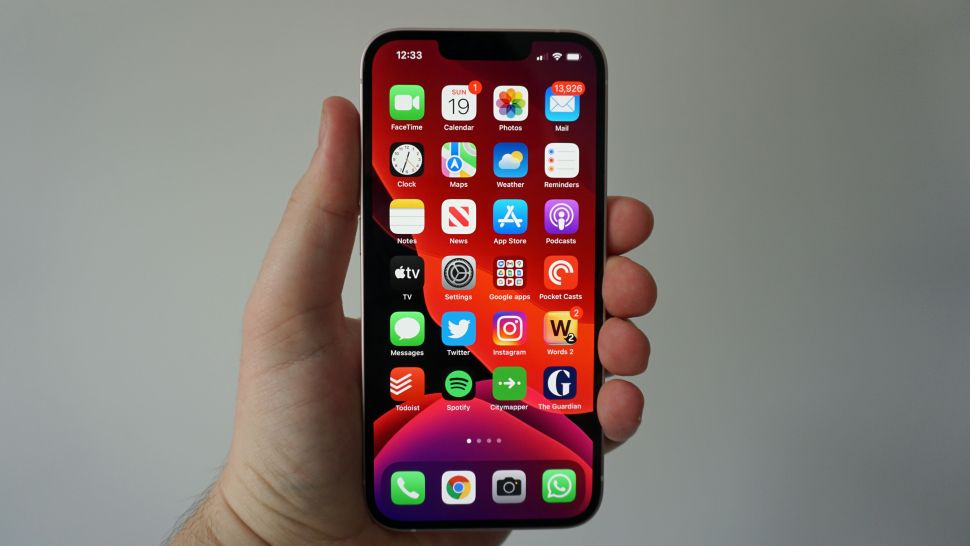
(Image credit: TechRadar)
The display on the iPhone 13 is 6.1 inches, with a resolution of 2532 x 1170. It’s a Super Retina XDR OLED display made by Apple, and it makes for a clear and bright image – the brightness has been improved on the iPhone 13, and it can hold its own against other smartphones in direct sunlight.
That resolution equates to 460 pixels per inch, which isn’t the best we’ve seen on the market but is perfectly suitable for everyday use – we didn’t find we ever needed a higher resolution, even when watching video or playing games.
There are thin bezels around the handset’s screen, and some of the display is also taken up with the notch at the top. Yes, there’s still a notch on the iPhone 13, but it’s 20% smaller than the notch on the iPhone 12, giving you a touch more screen real estate.
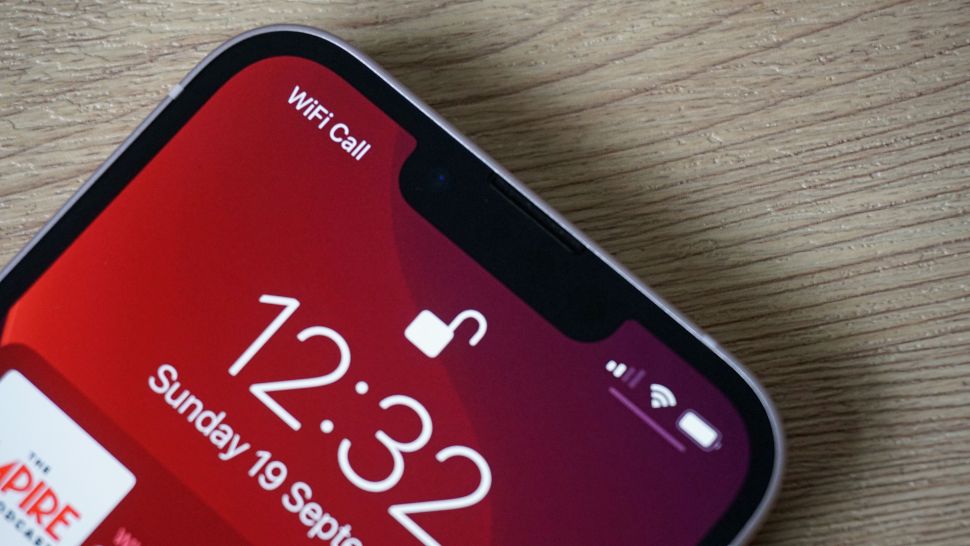
(Image credit: TechRadar)
It’s not a big change, but it’s noticeable when you compare the handset to the iPhone 12. It’s something you’ll quickly grow used to though.
An important note here is that the iPhone 13 display doesn’t get the new 120Hz refresh rate that Apple debuted on the iPhone 13 Pro and 13 Pro Max – the displays on those phones refresh twice as fast as a standard 60Hz screen for a smoother experience when scrolling web pages or playing games.
If you’ve experienced this technology before – it’s now common now on a lot of Android phones – you’ll notice the difference here, although it’s a feature that’s nice to have, rather than indispensable.
Camera
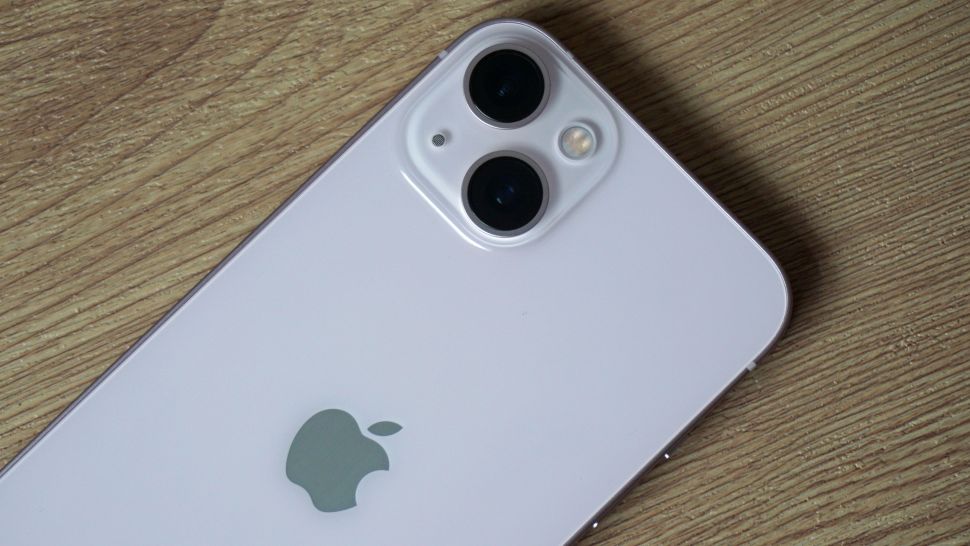
(Image credit: TechRadar)
Going on the headline specs, the iPhone 13 camera setup doesn’t look that different to the array on last year’s model, but you’re getting some worthwhile upgrades here, with tweaks to the cameras themselves as well as a variety of software updates.
You’ve got two cameras on the rear: a 12MP wide camera with an aperture of f/1.6, and a 12MP ultrawide camera with a f/2.4 aperture and a 120-degree field of view. There’s no telephoto shooter here – you’re reliant on digital zoom, so this phone isn’t going to be the best for grabbing long-distance shots.
When not shooting at a distance, this is a fantastic and versatile experience. The main camera uses 1.7µm pixels (up from 1.4µm on the iPhone 12) that give a noticeable difference to the picture quality here.
You’re also getting Apple’s Sensor Shift OIS technology, which debuted in last year’s iPhone 12 Pro Max, and which offers the best image stabilization we’ve seen on an iPhone, enabling you to get sharp shots even when you’re not able to keep the phone perfectly still.
There’s less noise in images taken in most scenarios than in comparable shots from the iPhone 12, and there were few situations where the camera didn’t perform to the level we’d expect – it’s a great point-and-shoot experience.
The ultra-wide camera’s 120-degree field of view is useful when you want to get more of your subject or scene in, but we mostly found ourselves sticking with the main camera.
There’s digital zoom up to 5x, but the results aren’t very impressive, and you’ll find that many other smartphones are more capable in this area, although it’s by no means an essential feature.
Another new feature here is Photographic Styles, which you can access through the camera app. These enable you to apply custom looks to your images, such as Rich Contrast, Vibrant, Warm and Cool.

(Image credit: TechRadar)
These are useful if you have a particular style of shooting, and the idea is that unlike a simple filter they will allow the phone to apply adjustments to different elements of an image. We didn’t find this made a huge difference to our shooting, but it’s another tool in your photography arsenal.
On the front of the phone is a 12MP f/2.2 wide camera that we found worked well for selfies and video calls. The front cameras on iPhones have been impressive for some time now, and while there are no big improvements here you’ll be happy with the results you get.
You can shoot video on the iPhone 13 at 4K at 24, 30 and 60 frames per second, as well as Full HD at 30, 60, 120 and 240fps.
The big video recording upgrade is the introduction of Cinematic Mode that allows you to film with a bokeh effect where the background of your shot is blurred. The effect also follows faces that are in the frame, so it’ll switch between subjects.
We’ve found this to work well, but it takes some getting used to and you may need to play around with it a few times to be able to get the absolute perfect shot. This is a fun tool though, and it’s something you may enjoy if you like playing around with video modes.
Camera samples

(Image credit: TechRadar)
Specs and performance
Apple’s iPhone 13 series all feature the company’s new A15 Bionic chipset, it’s latest attempt at making the most powerful smartphone chipset on the planet. Apple says it has a 50% faster CPU and 30% faster GPU than the competition.
Whatever the accuracy of those claims, Apple’s new handset is undeniably powerful, and while everyday performance won’t be noticeably different to what you’d get from the iPhone 12 or the Samsung Galaxy S21 Ultra, this will be a huge step up for those using an iPhone 8 or below.
During our testing we found that the iPhone 13 could launch apps in an instant, and was easily capable of swapping between apps with a limited wait for each to load.
Gaming on the handset was also a breeze, with titles loading as quickly as we’ve seen on other products like the iPad Pro (one of Apple’s most powerful devices in 2021). Games looked fantastic on the OLED display, with those GPU performance upgrades particularly noticeable.
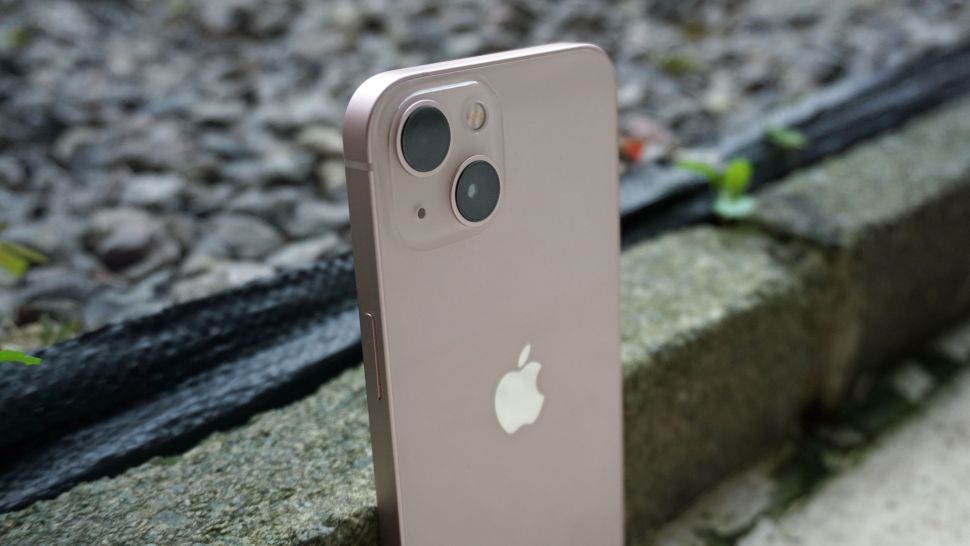
(Image credit: TechRadar)
Geekbench 5 scores match our testing with the phone having an average multi-core score of 4688. The iPhone 12 scored 3859 in the same test, while the Samsung Galaxy S21 scored 3367 and the OnePlus 9 Pro scored 3630.
Apple has made another big step up here, but it’s most noticeable in benchmarking results. The everyday experience is largely the same, but it’ll be a marked step up from much older iPhone models.
The A15 Bionic chipset is teamed with 4GB of RAM, and that’s enough to keep it running at full tilt. That’s less RAM than you’d see on most equivalent Android phones, but Apple doesn’t seem to need a lot of RAM to make the most of its A15 Bionic.
Your storage options are 128GB, 256GB or 512GB, and if you’re planning to load your phone up with media over a couple of years we’d recommend opting for the 256GB or 512GB variant; even with iCloud support, 128GB may prove easy to fill up.
Apple has, at least, dropped the ridiculously meagre 64GB storage option that’s been its base offering for the last few years.
The iPhone 13 series is 5G-ready, and it’s nice to know that you’re future-proofed for the next-gen tech, even if you don’t yet need it or it’s not available where you are – it’s becoming increasingly widespread, and the iPhone 13 will be compatible with any 5G carrier.
Software
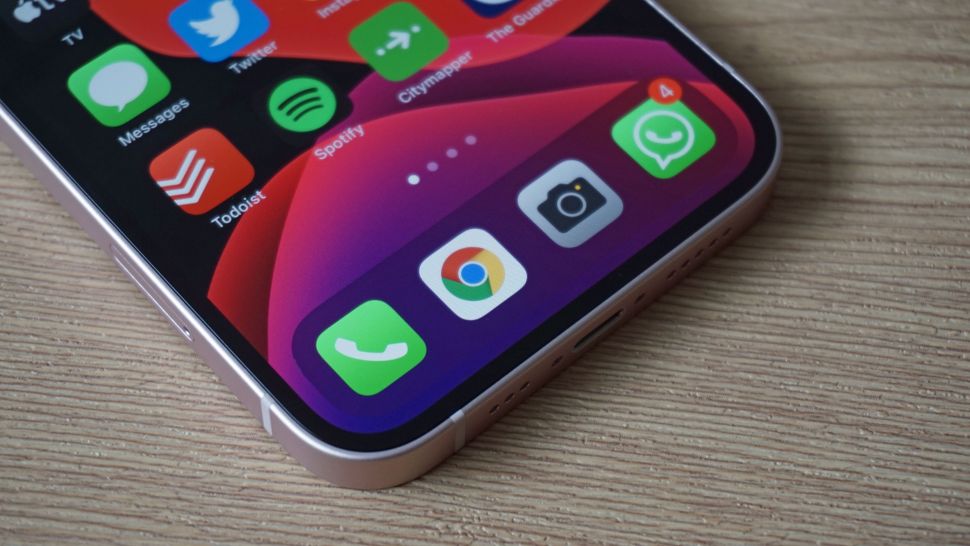
(Image credit: TechRadar)
The iPhone 13 comes running iOS 15 out of the box, so you can enjoy all the latest software features from the company.
The upgrades for 2021 are smaller than the major overhaul we saw with iOS 14, but the new additions are interesting, and include a new Focus mode that’s easy to enable through the dropdown menu.
Tapping the Focus label gives you easy access to the Do Not Disturb mode, as well as settings that you can enable for when you’re at work or you’re ready to go to sleep. Want to block your Twitter notifications when you’re at your desk? This will allow you to do that.
Other new features are more minor, but overall it’s a nice refinement of what we’ve seen before.
A major benefit of a new iPhone is that Apple is likely to support it with software updates for many years to come; even the iPhone 6S is compatible with iOS 15, so if Apple continues to offer that depth of software support you can expect the iPhone 13 to continue receiving updates until around 2027.
Battery life
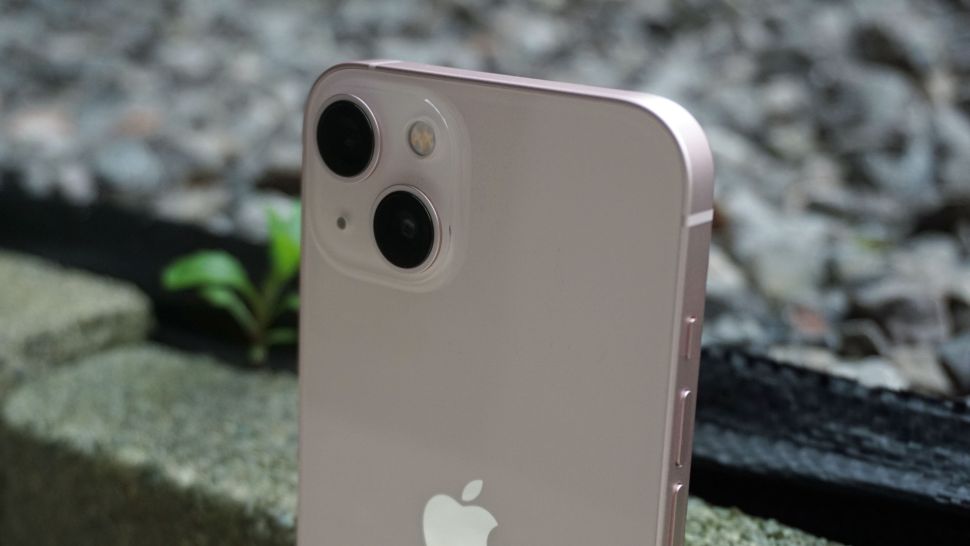
(Image credit: TechRadar)
Apple’s handsets have never been known for strong battery life, and while the iPhone 13 doesn’t offer the best stamina we’ve ever seen in a smartphone, it’s a clear improvement on previous iPhones.
We’ve yet to find out if Apple has increased the size of the cells inside the iPhone 13, but the increase in battery life here suggests so. Rumors ahead of the iPhone 13 launch suggested that Apple would be increasing the size of the batteries in every model.
According to Apple’s estimates, the iPhone 13 and iPhone 13 Pro Max are set to offer the better battery life in the series. We’ve found the battery life to be significantly improved compared to the iPhone 12 and what has gone before it.
During our testing time, the iPhone 13 made it through every day with enough charge in the tank to keep going for at least another couple of hours.
On one day, we pushed the phone to its absolute limits by ensuring the screen was on for the entire day streaming video from YouTube and other services from 10:30am until 11pm. We were unable to kill the phone, and it remained with 20% battery life. That was with the screen on full brightness for eight hours and 48 minutes.
As we’ve said, this isn’t the best battery life you’ll find in a smartphone – many Android alternatives will be able to last longer – but this is a big step up for Apple, and it’ll make the iPhone a more compelling option for many potential buyers.
Wireless charging makes a return here, and if you’ve got a compatible charger you’ll be able to hit 15W charging. That’s far from the fastest wireless charging on the market, but it’s still useful to have if you don’t like having to plug your phone in, or you’re low on battery and find yourself with a Qi charger to hand.
As with the iPhone 12 series, you won’t get a charger in the box with the iPhone 13. The aim here is to cut down on e-waste, and Apple’s logic is that you’re likely to have a Lightning charger from a previous iPhone purchase.
If you don’t, you can buy a charger from Apple for $19 / £19 / AU$29, while there are also third-party options that can cost less.
You may also want to upgrade your charger to make the most of that 20W charging, which many older iPhone chargers aren’t capable of.
Should you buy the iPhone 13?
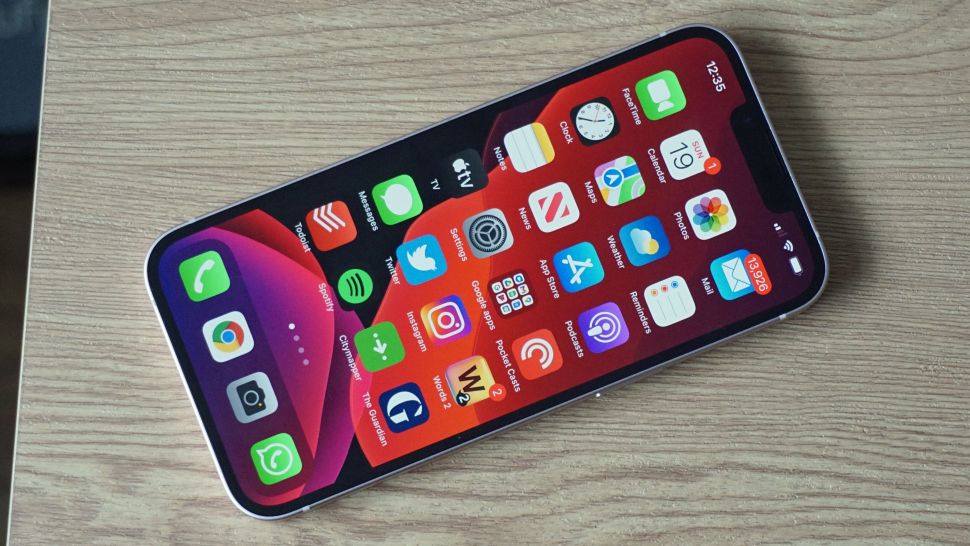
(Image credit: TechRadar)
Buy it if…
You own an older iPhone
If you own an iPhone 12, the iPhone 13 likely isn’t for you, as there’s not enough that’s new here to merit the upgrade – but if you own an older iPhone, such as an iPhone 8 or iPhone XR, there’s plenty to be excited about.
You need good battery life
The battery life on the iPhone 13 is a big step up over what we’ve seen from previous iPhone models. If you need a smartphone that’s capable of lasting a full day on a full charge, opt for this iPhone over older and cheaper models.
You wants lots of power
The iPhone 13 is a powerful smartphone, and it’s one of the most capable handsets we’ve ever used. If you need lots of power you’ll get that here, without having to step up to the iPhone 13 Pro.
Don’t buy it if…
You own an iPhone 12
If you already own an iPhone 12, it’s unlikely that you’ll need the upgrades that come with the latest model. If you’re desperate for the latest handset then by all means go for it, but the changes here are few and far between.
You want a small-screen phone
The iPhone 13 mini has a very similar set of specs to the iPhone 13, and it’s likely to be the better choice if you have smaller hands, or just prefer a smaller device.
You want an affordable phone
The iPhone 13 may be one of the most affordable members of this year’s range, but it isn’t that cheap in the grand scheme of things. There are many more affordable Android phones out there – or you could look at the iPhone SE if you want to stay in Apple’s stable.
Source: Techradar

